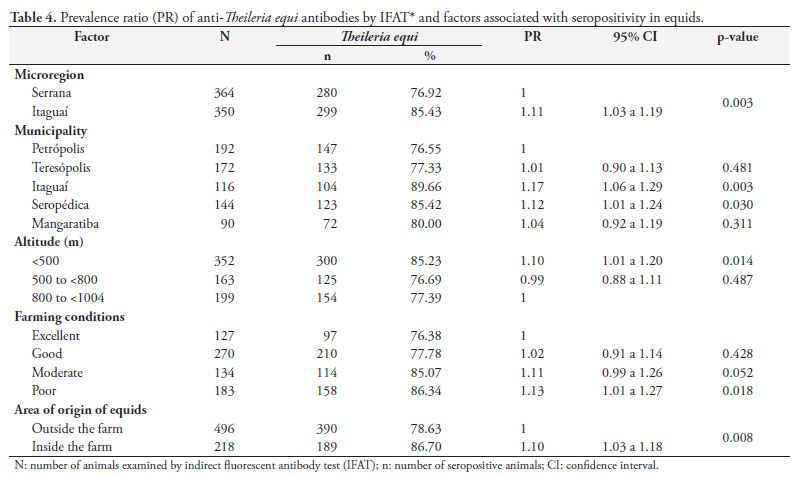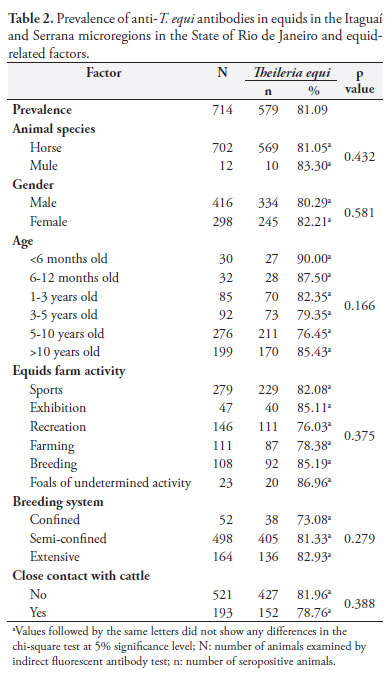Serum samples from 714 equids of Itaguaí and Serrana microregions, Rio de Janeiro, southeastern Brazil, were examined by indirect fluorescent antibody test (titer 1:80) for Theileria equi. The prevalence in the microregions and factors associated with seropositivity were evaluated and the prevalence ratio (PR) calculated. The overall prevalence of T. equi infection was 81.09% (n = 579), with higher prevalence (p < 0.05) in the Itaguaí (85.43%) when compared to Serrana microregion (76.92%). The geographic area, altitude, farming condition and area of origin of equids were associated (p < 0.05) with seropositivity for T. equi. Equids reared in the Itaguaí microregion (PR = 1.11, p = 0.003) and at altitudes below 500 m (PR = 1.10; p = 0,014) were more likely to be seropositive for T. equi. Furthermore, when equids were born in the farm (PR = 1.10, p = 0.008) and reared with poor farming conditions (PR = 1.13, p = 0.018) they were more likely to be exposed to T. equi. The main ticks found on equids were Amblyomma cajennense and Dermacentor (Anocentor) nitens. The microregions studied are endemic areas for equine theileriosis and there exists enzootic stability for T. equi. Only factors related to the collection area of serum samples influenced the seropositivity of equids for T. equi in that region.
horses; equine theileriosis; IFAT; prevalence; epidemiology




